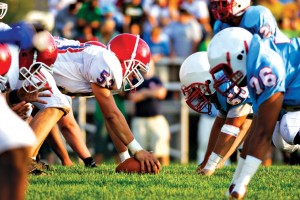Concussions and the Future of Youth Football
 With research showing that developing brains are more susceptible to injury, some experts are calling for the end of youth football programs and contact sports to help avoid traumatic consequences.
With research showing that developing brains are more susceptible to injury, some experts are calling for the end of youth football programs and contact sports to help avoid traumatic consequences.
A recent article published by The Post Game on the fate of youth football in America states:
“According to the American Association of Neurological Surgeons, between 4 percent and 20 percent of college and high school football players will sustain a brain injury during the course of one season; a report cited by CNN medical correspondent Dr. Sanjay Gupta estimates that about one in 10 high school players suffers a concussion. The Boston Globe recently reported that emergency room visits for youth sports-related traumatic brain injuries went up 62 percent from 2001 to 2009. The Centers for Disease Control and Prevention, which has labeled sports concussions “an epidemic,” reported last year that roughly 122,000 youths between the ages of 10 and 19 went to emergency rooms for nonfatal brain injuries. For boys, the top cause of injury was playing football.”
While a concussion diagnosis doesn’t always lead to a visit to the emergency room, doctors are seeing a rise in the number of sports-related concussions among children and adolescents. Health care professionals believe these numbers are on the rise because more coaches and physicians are educated and willing to diagnose concussions where they would have previously diagnosed them as minor head injuries. Still, some speculate that parents and coaches may be missing up to 9 out of 10 concussions.
Growing recognition of the potentially catastrophic consequences of brain injuries among younger athletes recently led the Canadian Paediatric Society to release a new position statement in January warning that “Because their brains are still developing, children and adolescents are more vulnerable to head injury and take longer to recover from concussions than adults,” according to Dr. Laura Purcell, the CPS statement’s author. In fact, the CDC states that younger athletes are at increased risk for traumatic brain injuries that are more severe and more difficult to recover from.
Boys over the age of 10 tend to lead in multiple concussions due to “high-energy risk taking,” but, while specialists tend to see mostly preteen and adolescent boys for concussions, girls are catching up. And the research shows that a young person who suffers from one concussion is more likely to suffer from another. Studies have linked a history of two or more concussions with a high rate of cognitive issues, including headaches, memory problems, mood swings, and impacted classroom performance.
Though the jarring impact may not result in a blackout, victims are also at risk for life-threatening complications, like or second-impact syndrome, in which an athlete suffers a second concussion while still recovering from a previous one. Though the precise physiological cause is uncertain, the outcome is a fatal or severely debilitating swelling of the brain.
Last year, concussion expert Robert Cantu suggested to the Boston Globe that children under 14 should not be allowed to play collision sports unless those activities are modified to eliminate head blows, and that athletes under the age of 18 should be prohibited from enduring more than an agreed-upon number of blows to the head during a particular period of time. What would those numbers look like? As a starting point, the Cantu’s company suggested no more than 1,000 hits in a season, and no more than 2,000 in a calendar year.
So how can we protect our children’s brains? Aside from educating yourself about the signs and symptoms of concussion and taking the necessary safeguards and risk management steps, many believe that concussion safety is “a matter of risk acceptance.” Anxious or worried parents and coaches can rely on experts trained in the most current proactive concussion management practices. At Bon Secours In Motion, our Certified Impact Consultant Physicians, specially trained physical therapists and athletic trainers will help get you back in the game. Measuring brain function with the ImPACT™ Neurocognitive Test, our experts can monitor an athlete’s symptoms to ensure that their recovery is progressing adequately.
Source: The Post Game: “End Game: Brain Trauma And The Future Of Youth Football In America”, The Vancouver Sun “Concussions hit the young hardest: Experts”

